EPD Gate Timing Scan - transition from pp running to AuAu running
Updated on Mon, 2024-10-07 07:39. Originally created by mstefaniak on 2024-10-06 14:42.
The timing can change, as we transition for p+p collisions to Au+Au. But likely it won't change much, and Chris has provided a good starting guess. Below, we do a more "quick-and-dirty" scan than usual, just looking at the peaks when we use the p+p settings, when we use Chris's guess, and when we vary Chris's guess +/- 10.
What we find: 25 boards prefer "Chris+10" but for 7 of them (all on the West), that completely misses the peak. For those 7, we use the same settings that were used in p+p running. The values themselves are at the bottom of this page.
As always, there is a giant pdf file attached to the bottom of the page, for full details.
As we transition from pp running to AuAu running, the timing can change. Additionally, the trigger group has added several more labels to the configuration.
Fortunately, we have the formulae for how the ADC START and STOP gates are related to each other:
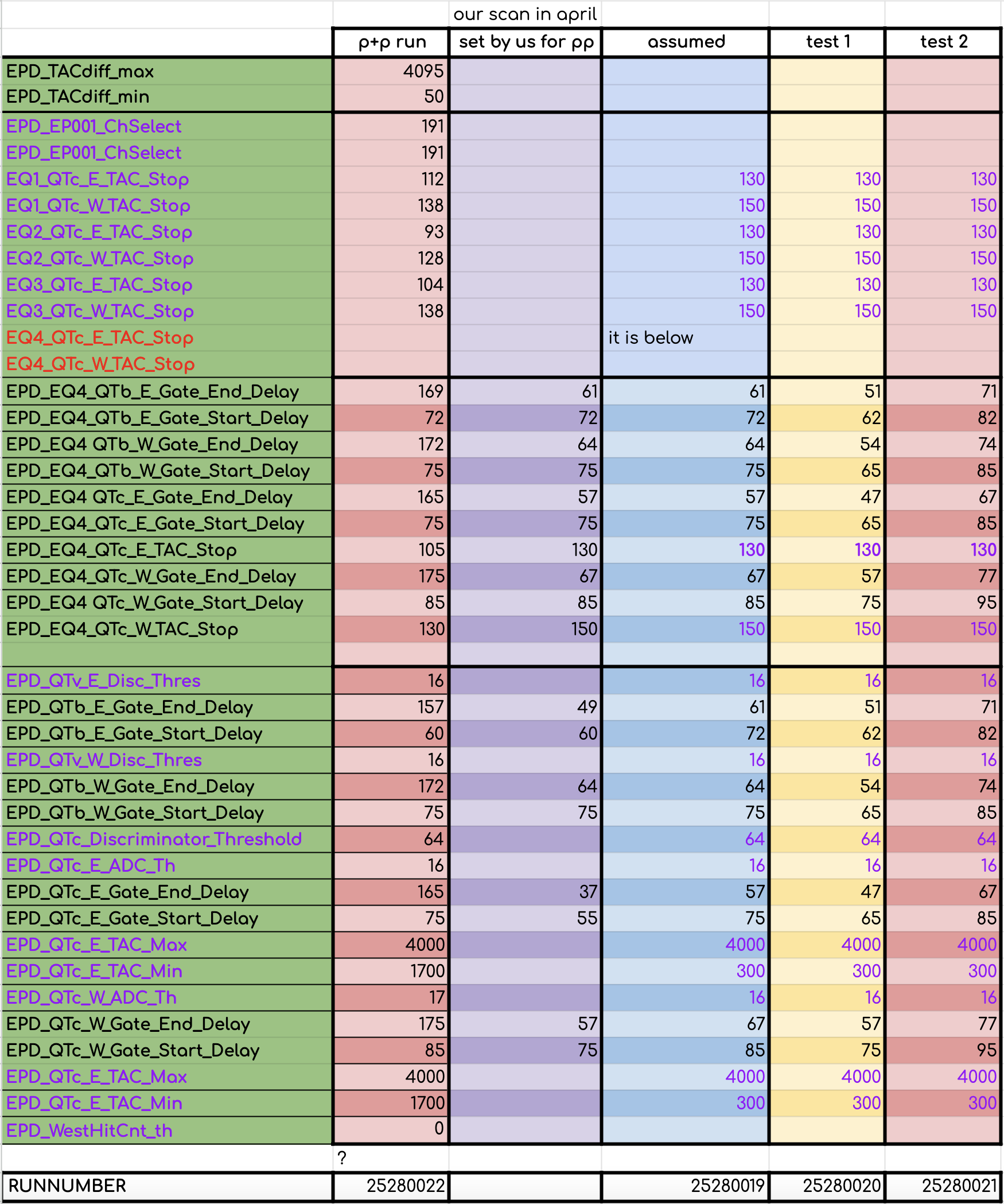
Figure 1: From a Google doc of Maria. The timing labels for the EPD. The third (purple) column shows the values that we found from our timing scan at the beginning of the pp run. The second column (red) shows the values after the trigger group tweaked them. The third column (blue) shows Chris's suggestion of what might be the best values for AuAu. The fourth (yellow) and fifth (orange) columns show settings where we decrease/increase Chris's guess for START values by 10.
The goal is to make the MPV as large as possible (i.e. integrating the entire signal). Usually, we do this and then subtract ~10 from the START_DELAY values, to allow us to make sure we catch the leading edge of everybody. Akio (10:00 AM meeting 6 Oct) suggests that this "subtraction of 10" will not be needed this time, for reasons I didn't quite understand.
Since we have a good starting point, and since STARTS for B/C and East/West are all different (we have EIGHT different labels for STARTs) and since a full scan is time-consuming and a pain, this "scan" is different than our previous ones. We will just look at the MIP MPV values from a reference p+p run, compared to those from Chris's suggestion and those where we add/subtract 10 from Chris's suggestion.
In the big plots that I always make, the x-axis is usually the START value. But for this quick-and-dirty "scan"

Figure 2: Example of one channel, MIP peaks and fits. From the left: Data from p+p running. All the rest are from Au+Au runs 6 Oct 2024. 2nd: Using p+p settings; 3rd: Using Chris's best guess; 4th: Subtracting 10 from Chris's best guess; 5th: Adding 10 to Chris's best guess.
In figure 2, for this channel, the "Chris+10" setting gives the largest MPV. This is true for most channels, but not the following board (which are all on the West side):

Figure 3: One of the eight boards where the "Chris+10" setting clearly leads to missing the peak altogether.
In the big pdf file that I always produce, I plot the fitted MPV versus the START_DELAY value. Remember that for this quick-and-dirty scan, the START_DELAY value corresponds to the first bulleted list above. Here is an example:
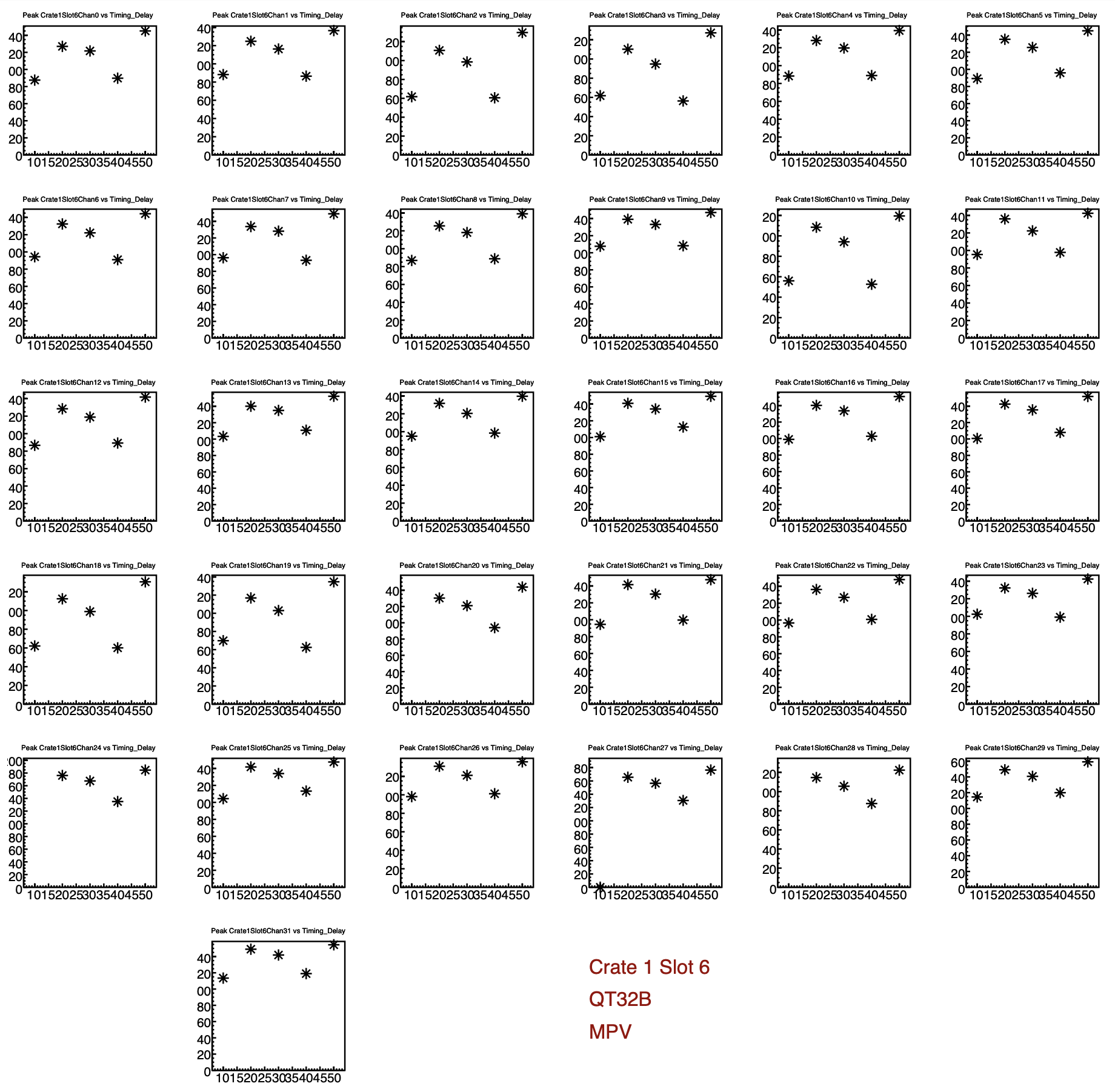
Figure 4: Fitted MPV versus "START_DELAY" where it is not really the start delay. From left to right, the data points are (10) pp reference run; (20) AuAu with pp settings; (30) Chris's best guess; (40) Chris-10; (50) Chris+10. For this board, the best (highest) value comes from Chris+10.
Note that these plots always indicate that the Au+Au peak is higher than when running p+p. That could be due to the timing change (a "good" change), but more likely it is due to the fact that these are single-MIP peaks, and the Au+Au has 2-MIP peaks that pull the fit to the right a bit.
I also make summary plots of which settings are preferred by each board:
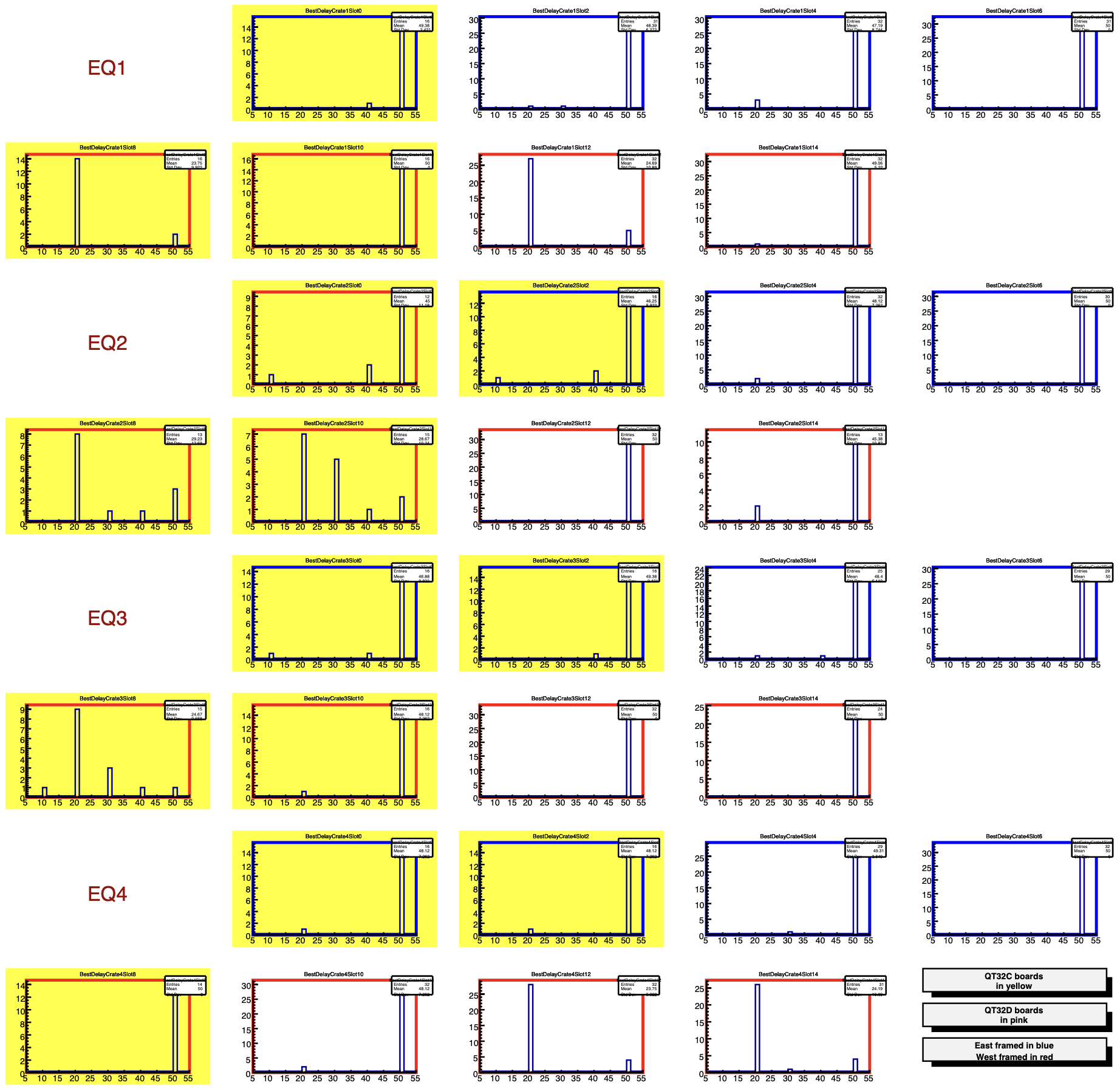
Figure 5: "Best" setting for each board. This is the next-to-last page of the big summary pdf file attached to this page.
So, of our 32 boards, 25 would prefer Chris+10, but the other 7 cannot use Chris+7 and would prefer the settings we have used in the p+p running that just ended.
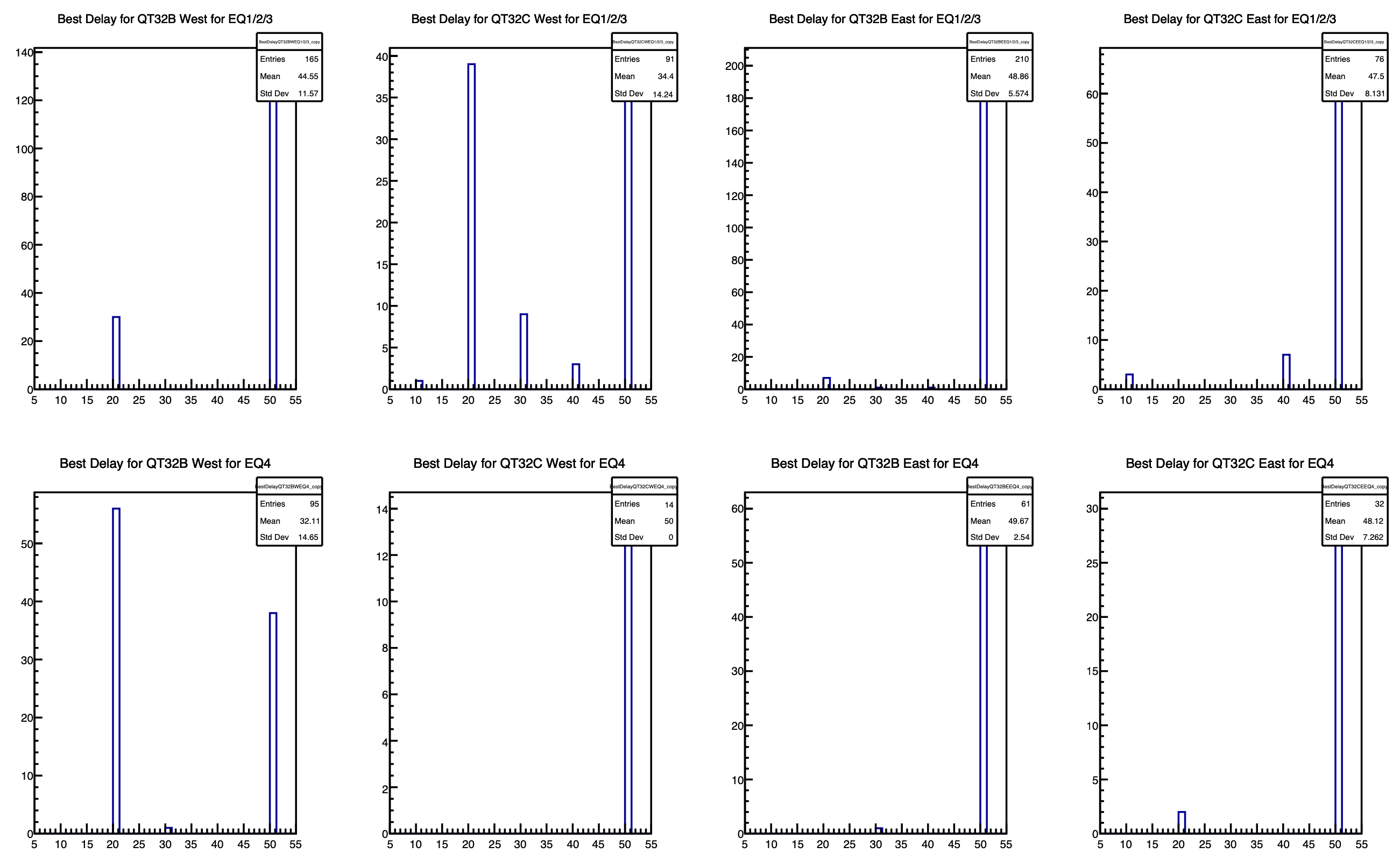
Figure 6: The preferred settings for the eight different "categories" of boards.
From Figure 6, we see that we can use the "Chris+10" settings for all of the East side, and also for the West_EQ4_QTCs. For the others (West_EQ4_QTBs and West_QT1/2/3_QTB and West_QT1/2/3_QTC), we are better off with the p+p settings.
(In principle, another option is to simply stay with the damned p+p settings for all channels, since they peaks always look just fine. A third option is just to stay with Chris's best guess, which is nearly the same.)
Bottom line:
Mike zoomed in and had the shift leader enter these values to the production labels. Screenshot below:
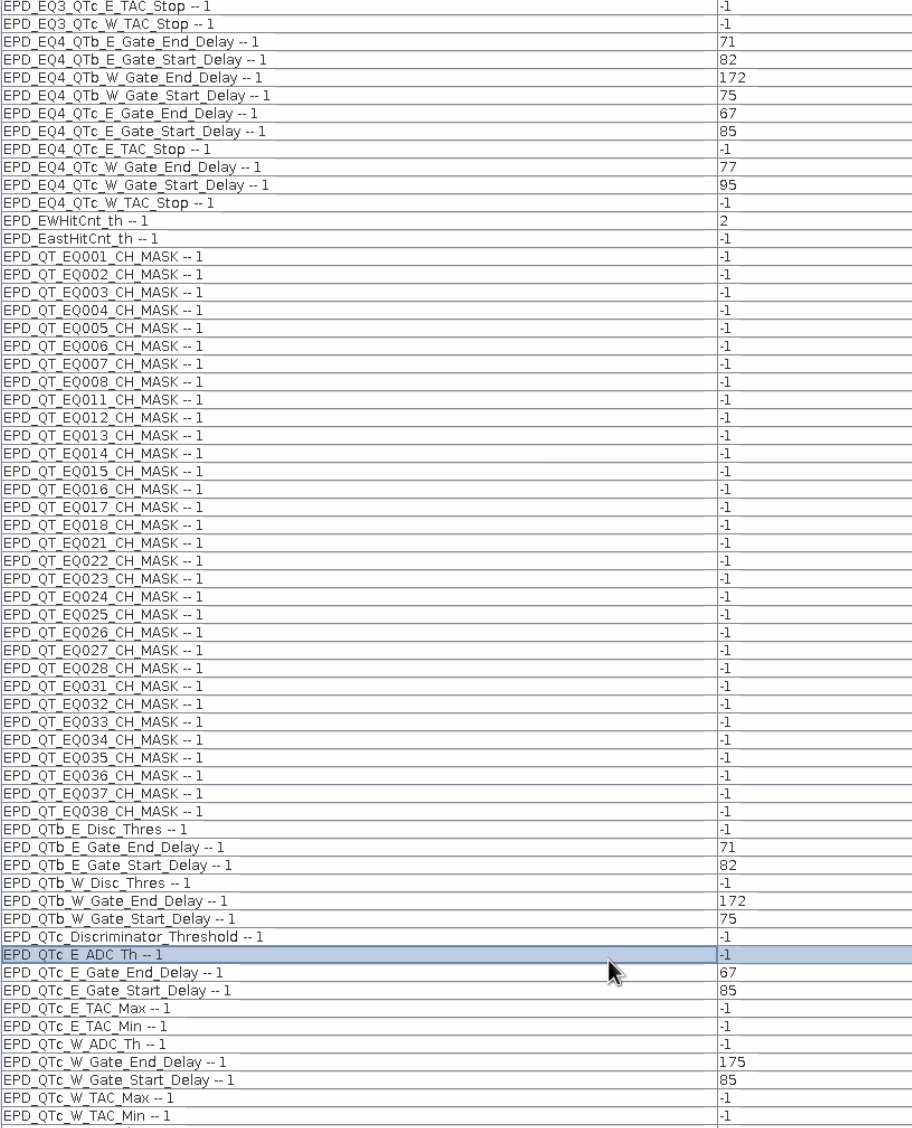
Since Mike's drupal code doesn't work for some reason, Maria has logged in and let Mike produce this drupal page under her name.
Executive Summary
The timing can change, as we transition for p+p collisions to Au+Au. But likely it won't change much, and Chris has provided a good starting guess. Below, we do a more "quick-and-dirty" scan than usual, just looking at the peaks when we use the p+p settings, when we use Chris's guess, and when we vary Chris's guess +/- 10.
What we find: 25 boards prefer "Chris+10" but for 7 of them (all on the West), that completely misses the peak. For those 7, we use the same settings that were used in p+p running. The values themselves are at the bottom of this page.
As always, there is a giant pdf file attached to the bottom of the page, for full details.
Details
As we transition from pp running to AuAu running, the timing can change. Additionally, the trigger group has added several more labels to the configuration.
Fortunately, we have the formulae for how the ADC START and STOP gates are related to each other:
- QTB_STOP = QTB_START - 11
- QTC_STOP = QTC_START - 18
- TAC_STOP = 2*START - 20

Figure 1: From a Google doc of Maria. The timing labels for the EPD. The third (purple) column shows the values that we found from our timing scan at the beginning of the pp run. The second column (red) shows the values after the trigger group tweaked them. The third column (blue) shows Chris's suggestion of what might be the best values for AuAu. The fourth (yellow) and fifth (orange) columns show settings where we decrease/increase Chris's guess for START values by 10.
The goal is to make the MPV as large as possible (i.e. integrating the entire signal). Usually, we do this and then subtract ~10 from the START_DELAY values, to allow us to make sure we catch the leading edge of everybody. Akio (10:00 AM meeting 6 Oct) suggests that this "subtraction of 10" will not be needed this time, for reasons I didn't quite understand.
Since we have a good starting point, and since STARTS for B/C and East/West are all different (we have EIGHT different labels for STARTs) and since a full scan is time-consuming and a pain, this "scan" is different than our previous ones. We will just look at the MIP MPV values from a reference p+p run, compared to those from Chris's suggestion and those where we add/subtract 10 from Chris's suggestion.
In the big plots that I always make, the x-axis is usually the START value. But for this quick-and-dirty "scan"
- Data from the p+p reference run are labeled START_DELAY = 10
- Data from Au+Au but using the trigger group's settings (red column above) are labeled START_DELAY = 20
- Data from Au+Au using Chris's best guess (blue above) are labeled START_DELAY = 30
- Data from Au+Au but subtracting 10 from all of the STARTs suggested by Chris are labeled START_DELAY = 40
- Data from Au+Au but adding 10 to all of the STARTs suggested by Chris are labeled START_DELAY = 50

Figure 2: Example of one channel, MIP peaks and fits. From the left: Data from p+p running. All the rest are from Au+Au runs 6 Oct 2024. 2nd: Using p+p settings; 3rd: Using Chris's best guess; 4th: Subtracting 10 from Chris's best guess; 5th: Adding 10 to Chris's best guess.
In figure 2, for this channel, the "Chris+10" setting gives the largest MPV. This is true for most channels, but not the following board (which are all on the West side):
- Cr1 Bd8 (QTC)
- Cr1 Bd12 (QTB)
- Cr2 Bd8 (QTC)
- Cr2 Bd10 (QTC)
- Cr3 Bd8 (QTC)
- Cr4 Bd12 (QTB)
- Cr4 BD14 (QTB)

Figure 3: One of the eight boards where the "Chris+10" setting clearly leads to missing the peak altogether.
In the big pdf file that I always produce, I plot the fitted MPV versus the START_DELAY value. Remember that for this quick-and-dirty scan, the START_DELAY value corresponds to the first bulleted list above. Here is an example:

Figure 4: Fitted MPV versus "START_DELAY" where it is not really the start delay. From left to right, the data points are (10) pp reference run; (20) AuAu with pp settings; (30) Chris's best guess; (40) Chris-10; (50) Chris+10. For this board, the best (highest) value comes from Chris+10.
Note that these plots always indicate that the Au+Au peak is higher than when running p+p. That could be due to the timing change (a "good" change), but more likely it is due to the fact that these are single-MIP peaks, and the Au+Au has 2-MIP peaks that pull the fit to the right a bit.
I also make summary plots of which settings are preferred by each board:

Figure 5: "Best" setting for each board. This is the next-to-last page of the big summary pdf file attached to this page.
So, of our 32 boards, 25 would prefer Chris+10, but the other 7 cannot use Chris+7 and would prefer the settings we have used in the p+p running that just ended.

Figure 6: The preferred settings for the eight different "categories" of boards.
From Figure 6, we see that we can use the "Chris+10" settings for all of the East side, and also for the West_EQ4_QTCs. For the others (West_EQ4_QTBs and West_QT1/2/3_QTB and West_QT1/2/3_QTC), we are better off with the p+p settings.
(In principle, another option is to simply stay with the damned p+p settings for all channels, since they peaks always look just fine. A third option is just to stay with Chris's best guess, which is nearly the same.)
Bottom line:
- EPD_EQ4_QTb_E_Gate_End_Delay = 71
- EPD_EQ4_QTb_E_Gate_Start_Delay = 82
- EPD_EQ4_QTb_W_Gate_End_Delay = 172
- EPD_EQ4_QTb_W_Gate_Start_Delay = 75
- EPD_EQ4_QTc_E_Gate_End_Delay =
67--> 57
- EPD_EQ4_QTc_E_Gate_Start_Delay =
85--> 75
- EPD_EQ4_QTc_W_Gate_End_Delay =
77--> 67
- EPD_EQ4_QTc_W_Gate_Start_Delay =
95--> 85
- EPD_QTb_E_Gate_End_Delay = 71
- EPD_QTb_E_Gate_Start_Delay = 82
- EPD_QTb_W_Gate_End_Delay = 172
- EPD_QTb_W_Gate_Start_Delay = 75
- EPD_QTc_E_Gate_End_Delay =
67--> 57
- EPD_QTc_E_Gate_Start_Delay =
85--> 75
- EPD_QTc_W_Gate_End_Delay =
175--> 67
- EPD_QTc_W_Gate_Start_Delay =
85--> 85 (same)
- EPD_EQ1_QTc_E_TAC_Stop =
150--> 130
- EPD_EQ1_QTc_W_TAC_Stop =
150--> 150 (same)
- EPD_EQ2_QTc_E_TAC_Stop =
150--> 130
- EPD_EQ2_QTc_W_TAC_Stop = 150 (same)
- EPD_EQ3_QTc_E_TAC_Stop =
150--> 130
- EPD_EQ3_QTc_W_TAC_Stop = 150 (same)
- EPD_EQ4_QTc_E_TAC_Stop =
150--> 130
- EPD_EQ4_QTc_W_TAC_Stop =
170--> 150
Mike zoomed in and had the shift leader enter these values to the production labels. Screenshot below:

»
- mstefaniak's blog
- Login or register to post comments
